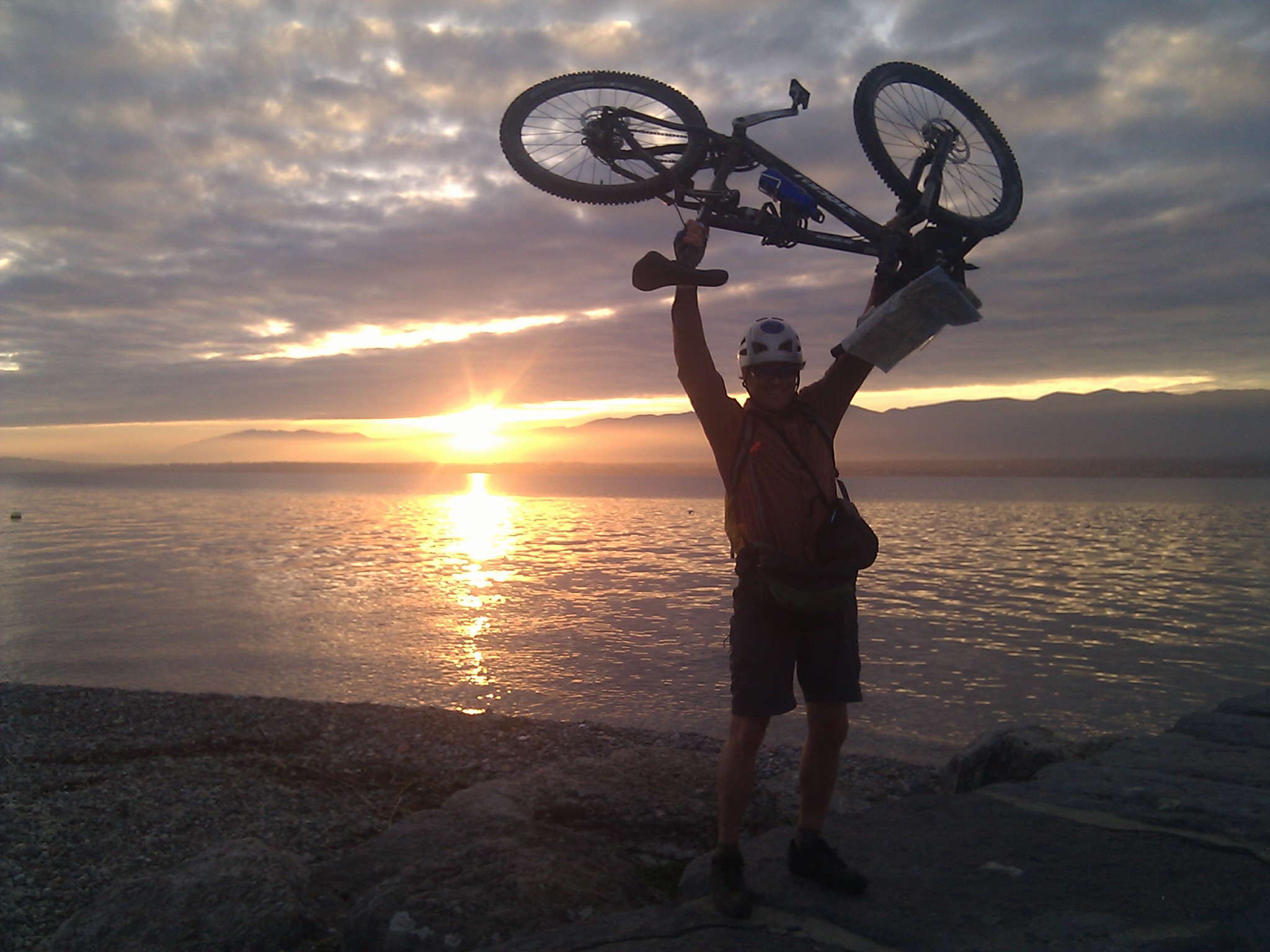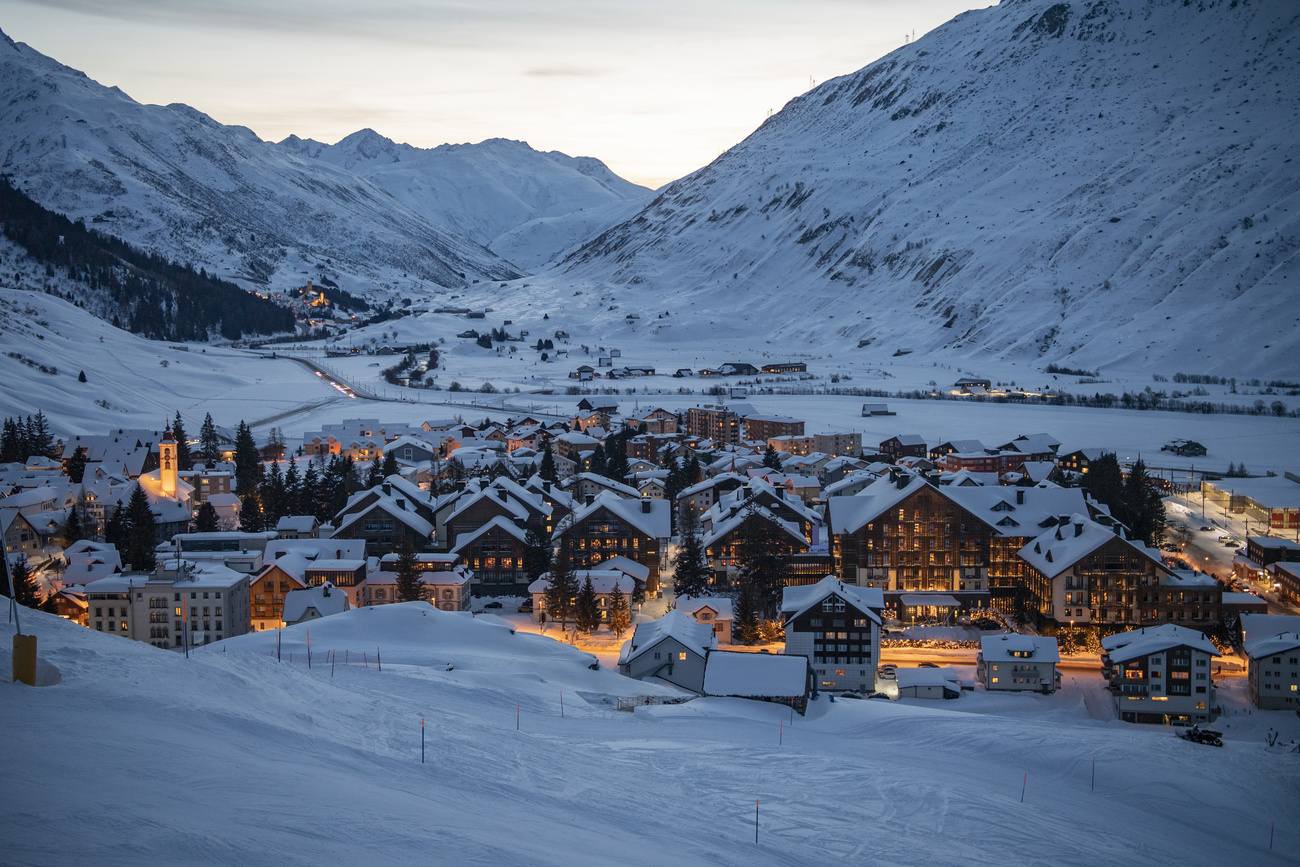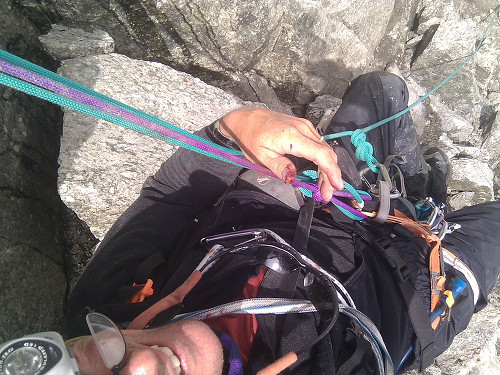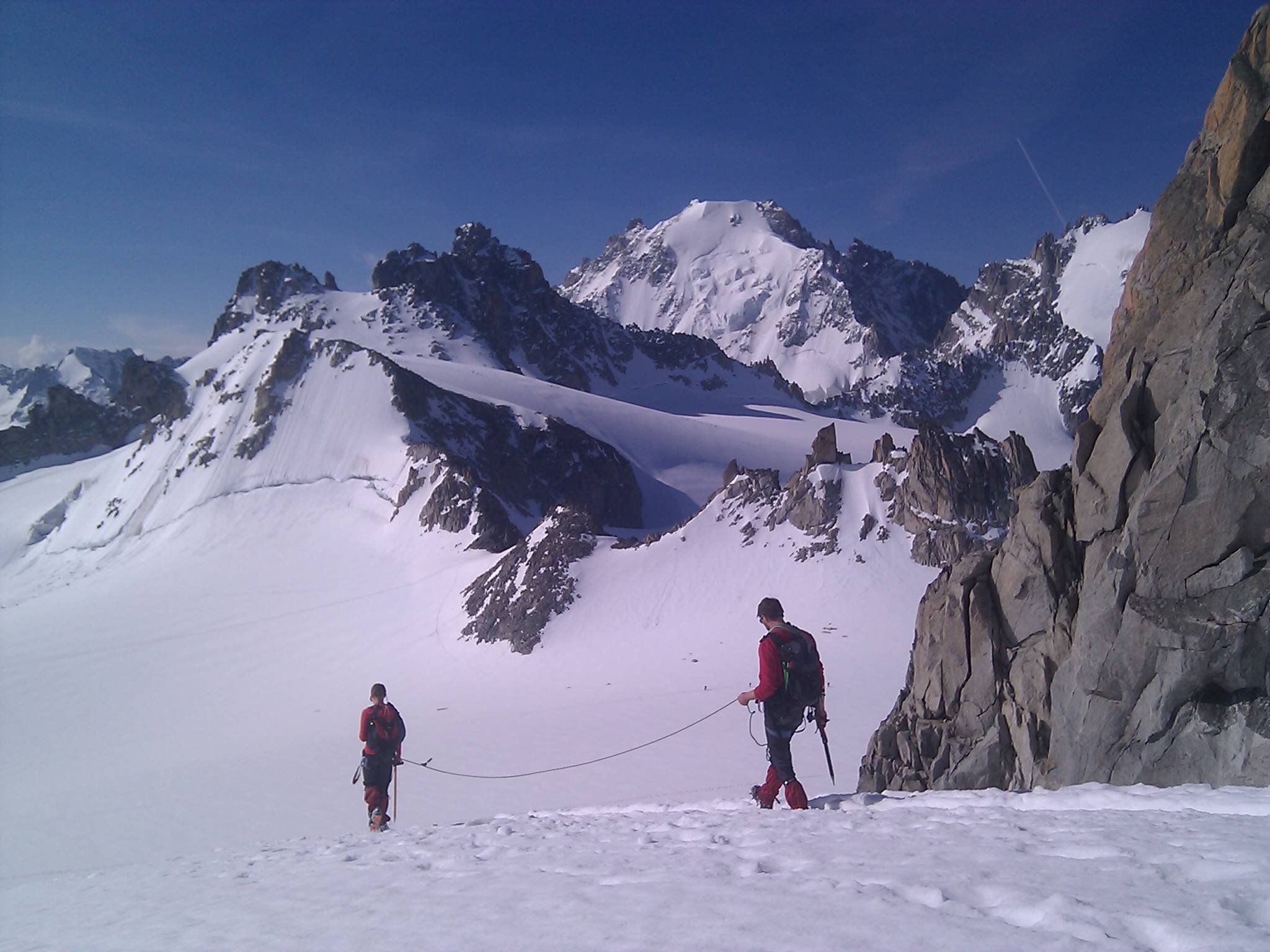Up close and personal on the Swiss north border

This is the end of the beginning, but far from the beginning of the end.
I had originally expected to pull into St Gingolph about a month ago, exhausted from 100 days along the border. This was supposed to be the culmination of an epic journey, and the plan was that I would walk back up to Leysin, where it all began, and celebrate with family and friends. That was the plan.
The reality is that I paddled into St Gingolph a month late – and about 1,000 kilometres short. The hard kilometres.
I’ve written enough about my accident and the change of plans, so I won’t go into details. But for those who are new to this quest for Swiss border stories, the quick summation is that in June I started walking from my old home town of Leysin. A mere 10 days later I pulled on a loose rock and fell about 15 metres, breaking five bones in my feet and necessitating a helicopter rescue.
Three months later, my bones had healed enough to kayak and bike, so I returned for the northern borders – the relatively flat ones.
Starting on October 5 in Sargans, I floated the Rhine in a kayak, peddled the border deviations around Schaffhausen by mountain bike, biked the French border along the Jura mountains and around Geneva, then kayaked Lake Geneva back to St Gingolph. The Austrian and Italian borders must wait until next summer when my feet have fully healed and the snows have melted.
I’ve already reflected on the Rhine portion of this journey – how despite its beauty it felt completely altered by man, and despite the old buildings lending a sense of timelessness, history is marching forward now as much as ever. All is changing, as it always has.
Change would certainly describe the second half of this second stage of my border circuit as well. New friends joined me, this time Americans from my home town of Hood River, Oregon. Both Jay Sherrerd and Lee Greenwald had intended to hike and climb with me last July and August. Fortunately, they were able to change their airline tickets to join me on bikes this fall.
All-weather rides
Our strategy was to stick exactly to the border for part of each day – even in forests with narrow rough trails – and to spend the rest of the day on the nearest road to the border that offered more speed and culture. After all, forest tracks are a small part of what this country is about. The farms and villages tell me much more and are far more exotic to someone like me, whose home is at the edge of a forest.
Each day was unlike the previous one, both in weather and landscape. Jay and Lee had held off committing to join me due to their fear of autumnal cold and rain. We ended up getting some of both, and even some wet snow, but most of the time it was purely magnificent. I had been told that I would see nothing but evergreens in the Jura, but instead we were often surrounded by the radiant gold of deciduous trees preparing for winter.
The epitome of autumn glory came in the spectacular Doubs River canyon, where we traveled upstream for two days along a mixture of hiking trails and small roads. The Doubs was an environment all of its own, a (relatively) natural and unpopulated world carved out of the Jura hills and plateau above.
We had dropped into this canyon from the upper world, and two days later we climbed back out – like a mountain in reverse. I had read before about efforts to preserve the Doubs to protect its wildness and beauty, and I sincerely hope that protection comes soon – and transnationally, as the entire northern flank is French.
Travelling southwest from Basel felt like I was entering familiar territory even though I’d never been there before. This was mostly due to the language, as we were now in the French speaking region. Leysin is French-speaking, and I’ve held onto enough of that language to converse without translation. It was a wonderfully liberating feeling, and also made Switzerland feel more like the homeland I remember.
Wow factor
Also fun was seeing things I remember from third-grade geography lessons in Leysin: lakes with streams going in but not out, and rivers that burst from holes in the ground. These features come from the Jura’s ancient limestone being riddled with caverns, some from standard limestone leaching, others from peculiar formations left over from the Ice Age.
The most memorable event of the northern border came when we gradually peddled uphill on the flank of Mont Dole until, cresting the pass, we saw the entire western Alps spread out before us. When I came over the pass I nearly fell off my bike with excitement.
Those mountains were the country I knew before wandering the northern borders last month. They are a different world – not better or more beautiful, but entirely otherworldly. The farms and villages and even forests we had travelled over the last few weeks were rich, profound, and magnificent. But there’s no denying that for pure wow factor, a dazzling chain of white peaks is hard to beat.
Paddling Lake Geneva brought me day by day closer to the Alps. And now finally I’ve returned to the beginning, back to St Gingolph at the border and Leysin at the heart of my world.
As good as it gets
I started this journey by following the skyline as seen from Leysin – the French border south until it reaches Italy on Mont Dolent. But the journey isn’t even half over, as connecting Sargans with Mont Dolent next summer will involve a distance that I now appreciate far more than when I began. But I’m looking forward to it, as wandering through and over mountains is as good as life gets.
I wish I could report that now I’m headed home into Adele and Siena’s arms, but while I was on the Rhine I was invited to present this journey to the International Festival of Mountain and Adventure Films in Austria, and be a judge for this year’s crop of films. It’s an honour to be invited, and the timing is right, so duty calls. Adele and Siena: I’ll be home soon!
And to everyone who has been following my journey, I hope you`ve enjoyed the ride so far, and that you’ll return for more next summer.
Following his accident in July 2010, Harlin postponed the mountain section of his tour until 2011, and instead completed the northern and western parts of the border.
The Swiss frontier – from Trübach, near Liechtenstein, to St Gingolph, passing counterclockwise to Basel, Geneva, and across Lake Geneva – was considered the “easy” part of the journey. The exact border offers the following statistics:
Total km: 891
Total elevation gain: 20,292m
Total elevation loss: 20,991m
Distance paddled: 334km
Distance biked: 557km
The next phase of the journey will be considerably more challenging. These are the statistics Harlin must work around when he resumes from Trübach to Mont Dolent, scene of his accident:
Total km: 928
Total elevation gain: 106,825m
Total elevation loss: 109,634m
Facebook fans: 21,346
No. of Tweets: 164
swissinfo.ch’s “Border Stories” project was one of the projects shortlisted in the Emerging Media category of the Prix Europa competition.

In compliance with the JTI standards
More: SWI swissinfo.ch certified by the Journalism Trust Initiative















You can find an overview of ongoing debates with our journalists here . Please join us!
If you want to start a conversation about a topic raised in this article or want to report factual errors, email us at english@swissinfo.ch.